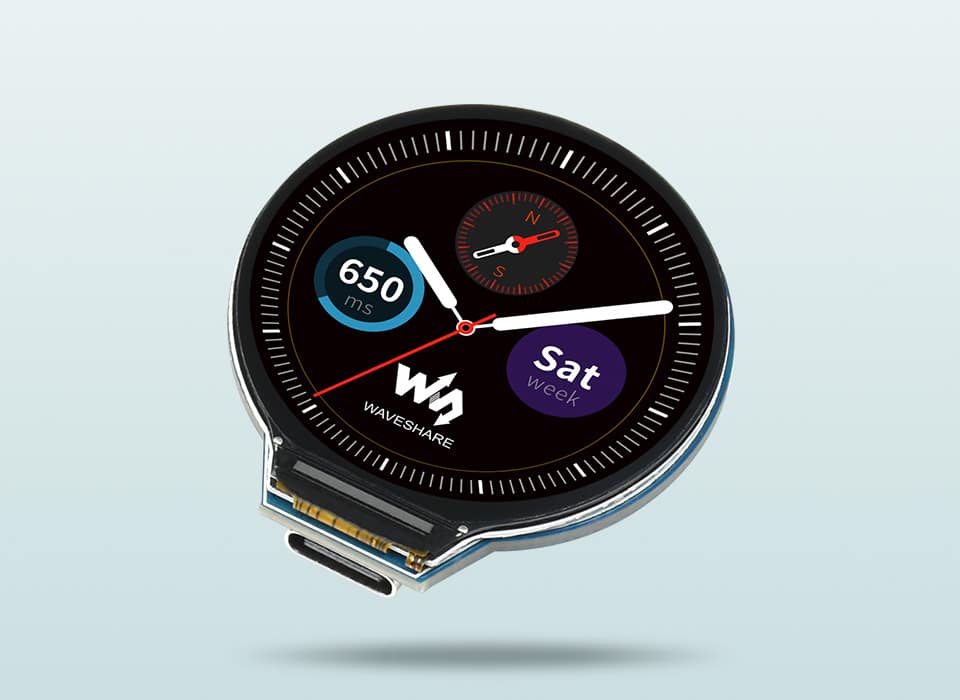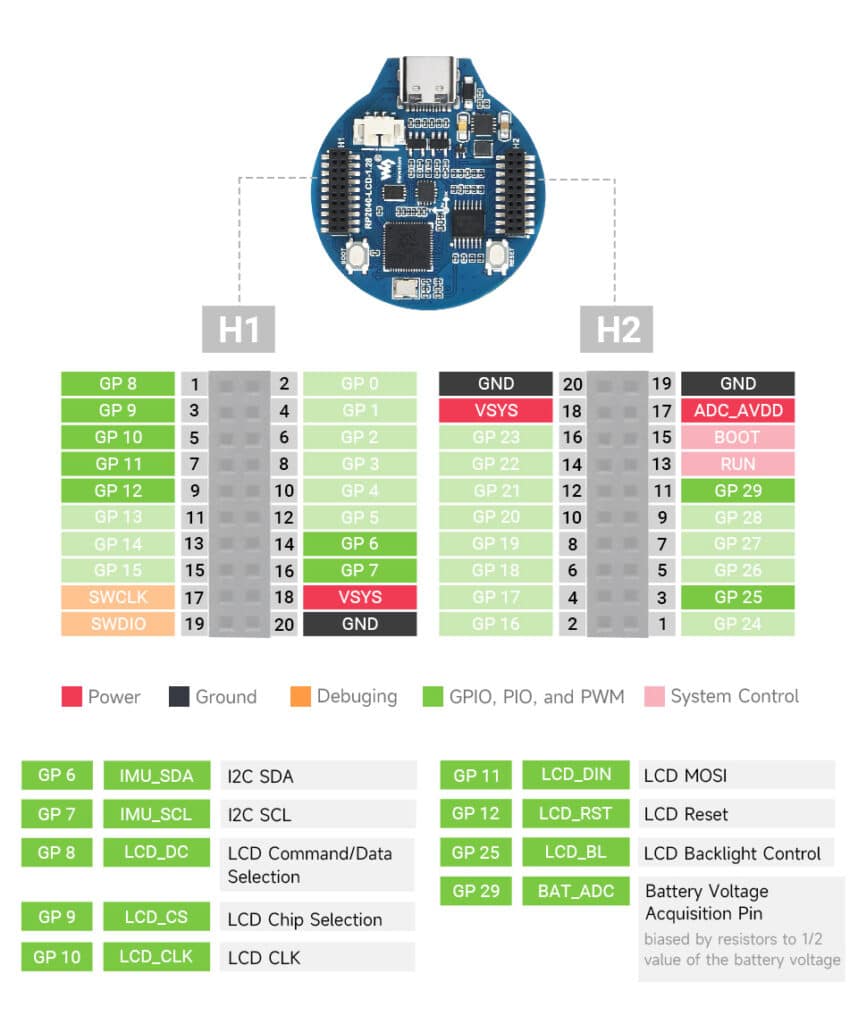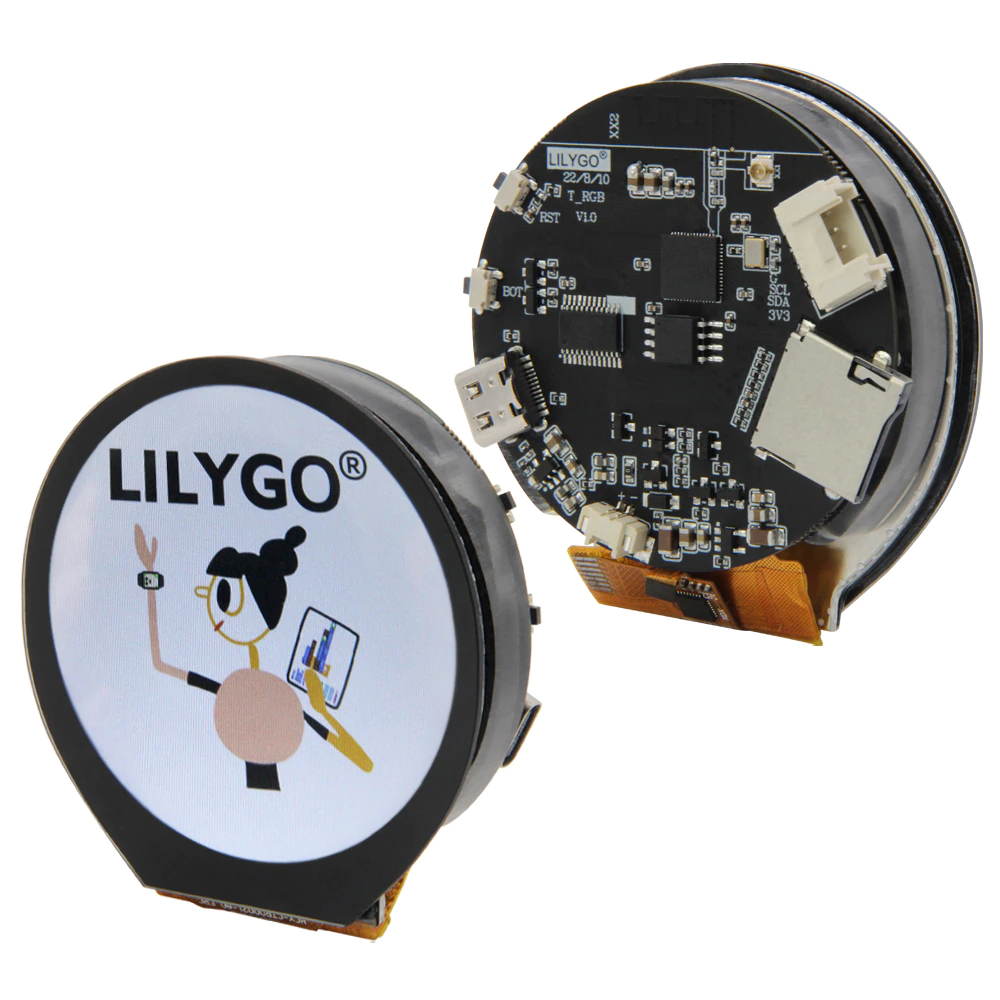Smartwatches and wearables are the new trends, there is a wide collection of smartwatches available in the market for all price ranges from a few hundred dollars to thousands of dollars and different types like opensource smartwatches and hackable smart watches but still as makers we are always gravitating towards making something of our own! because that’s what we do right?. So without a lengthy introduction In this article, I am going to introduce some of the products which I find which will help us to make our own smartwatches or wearables.
RP2040 development board with Display


This is a great product from Waveshare for beginners. Powered by the new RP2040 microcontroller from Raspberry Pi with an onboard round LCD display of 1.28 inches with a resolution of 240 × 240 pixels. The most fascinating thing is that it is having a bunch of inbuilt sensors in the PCB like an Accelerometer, Gyroscope, and Temperature Sensors along with USB C so that we can upload the code with ease without the difficulty of hooking up some USB convertors to program the RP2040 microcontroller.
Because the product is using RP2040 at its heart we can use the official Raspberry Pi C SDK and also MicroPython to program.
Features


- RP2040 microcontroller chip by Raspberry Pi Foundation.
- Dual-core Arm Cortex M0+ processor, running up to 133 MHz speed.
- 264KB of SRAM, and 2MB of onboard Flash memory
- Type-C interface for uploading the code
- On-board 1.28-inch 240 × 240 resolution, 65K color IPS LCD display.
- On-board lithium battery charging and discharging connector.
- All GPIO are led out through 1.27 pitch female headers (but some pins have been connected to internal circuits).
- USB 1.1 with device and host support.
- Low-power sleep and dormant modes.
- Drag-and-drop programming using mass storage over USB.
- 2 × SPI, 2 × I2C, 2 × UART, 4 × 12-bit ADC, 16 × controllable PWM channels.
- Accurate clock and timer on-chip.
- Temperature sensor.
- 8 × Programmable I/O (PIO) state machines for custom peripheral support.
Pros
- Low cost.
- GPIOs for connecting external sensors/components.
- Inbuilt accelerometer and gyroscope.
- Inbuilt temperature sensor.
Cons
- No WiFi / Bluetooth.
- No touch screen.
- Low resolution of 240 x 240 pixels
Pinout


The GPIO 6,7,8,910,11,12,25,29 are already used for interfacing the onboard LCD display and sensors so we cannot use them unless we decided to do multiplexing. Still, we have a bunch of GPIOs left when we needed to interface more sensors.
LILYGO® T-RGB ESP32-S3 2.1 inch Round Display


This product from LILYGO is more exciting because it’s using our favorite microcontroller from Espressif the ESP32-S3 with a 2.1-inch round touch display with a resolution of 480 x 480 and yes because it’s using the ESP32 we have the ability to use WiFi and Bluetooth which is the most important feature when we are making a smartwatch or wearable device the previous product we discussed lacks the wireless connectivity features because it’s using the RP2040 microcontroller but this one is little more expensive.
Features
- ESP32-S3R8 Tensilica Xtensa Dual Core LX7 Microprocessor.
- Supports Wi-Fi 802.11 b/g/n and Bluetooth 5.
- 2.1-inch ST7701S TFT LCD full-color display.
- Touch interface.
- Resolution of 480 x 480.
- Supports TF-Card.
- USB type C.
- LiPo Battery interface.
Pros
- Touch screen
- WiFI and Bluetooth 5 support
- High resolution of 480 x 480 pixels
Cons
- Expensive
- No GPIOs for connecting external sensors.
- Lack of sensors like an accelerometer, gyroscope, and temperature
Pinout


Because all the GPIOs are used by the onboard components like the TF card slot, Touch interface, and LCD we don’t have any more GPIOs left for interfacing any external sensors or components.

